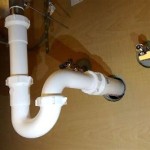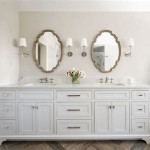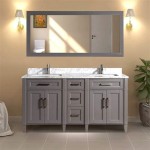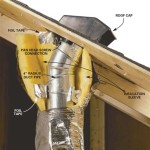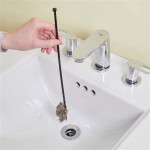How to Get Mold Out of a Bathroom
Mold, a common problem in bathrooms due to high humidity and moisture, can cause health issues, unpleasant odors, and unsightly stains. Eradicating mold requires a multi-pronged approach that addresses both the immediate problem and the underlying causes. This article outlines a comprehensive guide to effectively remove mold from your bathroom, ensuring a clean and healthy environment.
1. Prevention and Identification
The first step in mold removal is to understand its causes and prevent further growth. Mold thrives in damp environments, particularly where there is poor ventilation and water leaks. Regularly cleaning your bathroom with a mild bleach solution can deter mold growth. Additionally, fixing leaks promptly and improving ventilation are crucial steps in preventing mold from reappearing.
Identifying the type of mold is essential. While some molds are merely unsightly, others pose health risks, particularly for individuals with allergies or respiratory problems. If unsure, consult a professional for identification. Common types of bathroom mold include black mold (Stachybotrys chartarum), white mold (Cladosporium), and mildew (Aspergillus).
2. Cleaning and Removal
Once the mold is identified, cleaning and removal can begin. This process involves multiple steps to ensure effective eradication.
Protective Gear: Always wear protective gear while cleaning mold, including gloves, a mask, and eye protection. Mold spores can be harmful when inhaled, so safeguard your health.
Ventilation: Ensure adequate ventilation during the cleaning process to prevent mold spores from spreading. Open windows, use fans, or invest in a dehumidifier to dry out the air.
Cleaning Solution: A bleach solution is the most effective for killing mold. Mix 1/2 cup of bleach with 1 gallon of water. Apply the solution to the affected area using a spray bottle or a damp cloth. Allow the solution to sit for at least 10 minutes before scrubbing with a stiff brush.
Mold Removal from Hard Surfaces: For hard surfaces such as tiles, grout, and showerheads, a bleach solution works well. However, for porous surfaces like wood or drywall, specialized mold removal products may be required.
Drying: After cleaning, thoroughly dry the affected areas. Use a towel, a hairdryer, or a fan to remove excess moisture.
3. Post-Removal Maintenance
After successfully removing mold, maintaining a clean and dry bathroom environment is crucial to prevent its recurrence. Regular cleaning with a bleach solution, especially in high-moisture areas like showers and sinks, should be a routine practice.
Addressing underlying causes of mold growth is vital. If leaks or poor ventilation are contributing factors, these issues should be repaired promptly. Replacing old or damaged caulk around tubs and sinks can also prevent water from seeping into walls and creating mold-friendly environments.
Maintaining a dehumidifier in the bathroom can help regulate humidity levels. By keeping the air dry, you create an unfavorable environment for mold growth.
It is important to note that while this article provides a general guide, specific mold removal techniques may differ based on the severity of the problem and the type of mold present. For extensive mold infestations or if health concerns are a factor, consulting a professional mold remediation company is recommended.

Black Mold In The Shower How To Clean It Kitchen With Matt

How Do I Remove Black Mould From Shower Floor

How To Clean Mold From Your Bathtub Using Toilet Paper Mental Floss

Black Mold In The Shower How To Clean It Kitchen With Matt

How To Get Rid Of Mold In Bathroom 2024 Tips From Puroclean

Bathroom Mold How To Kill On Ceiling

How To Get Rid Of Bathroom Mould Big

Bathroom Diy How To Remove Mould

How To Get Rid Of Black Mold In Bathrooms

Bathroom Ceiling Mold Removal When To Clean Call Branch Environmental


